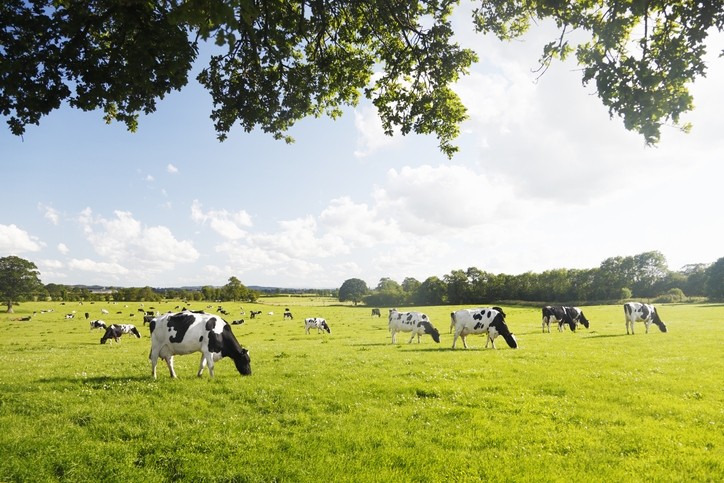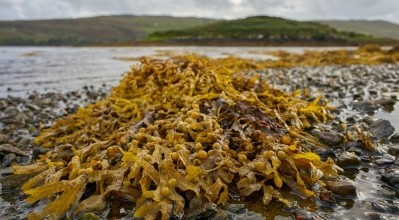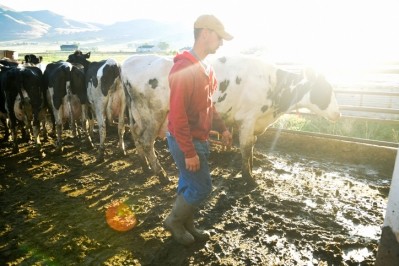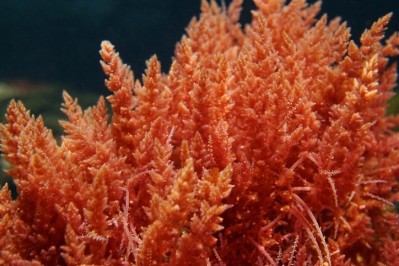Hazel leaves added to pellets may reduce methane emissions in dairy cows

As cows burb, they emit the methane produced in their stomach, and this factor makes dairy and beef production responsible for a significant amount of man-made global warming. So the race is on to find solutions to reduce methane emissions in livestock, namely in dairy and beef cattle.
Researchers globally are weighing up approaches to cut methane release in ruminants from the use of certain types of seaweeds, to synthetic feed additives to probiotics as well as evaluating the impact of residual feed intake and feed efficiency on methane production in livestock. Experts are also trying to determine how effective it is to go down the genetic route and select for low methane emitting cows.
Now a team, comprising Swiss, German and Norwegian experts, has shown that hazel leaves as a feed supplement for dairy cows demonstrate great potential to mitigate emissions of methane without impacting milk production.
They say their study is one of a few to show that it is possible to reduce such emissions in dairy cows - in this case feeding them a tannin rich feed supplement - without their being a concomitant negative impact on the animal’s performance.
The study
The tannin-rich leaves of hazel (Corylus avellana) gradually replaced a high-quality forage - dried alfalfa - in 20 types of experimental pellets fed to 20 mid-to-late lactating cows.
The researchers outline how the pellets were produced: Dried hazel leaves were provided by Alfred Galke GmbH (Bad Grund, Germany) in a particle size of 4 to 6 mm. The leaves were harvested in 2015 and 2016 in Albania. The alfalfa, purchased from Landi (Sense-Düdingen, Switzerland), was harvested in 2016 in France. The alfalfa was ground to a 3-mm particle length with a Sigma 5.2 hammer mill (Kuhn AG, Bottighofen, Switzerland). The hazel leaves, alfalfa, and molasses were mixed with a batch mixer (Speedmix DFML-1000, Bühler AG, Uzwil, Switzerland) and afterward pelleted to a 4.5-mm diameter (Kahl 40 PS, Amandus Kahl GmbH & Co, Reinbeck, Germany) using steam of max. 60°C (Bühler AG, Uzwil, Switzerland).
Additionally, the cows were fed a mixed basal ration and some concentrate.
The proportion of hazel in the 20 complete diets ranged from 0 to 400g/kg dry matter.
After 14 days of adaptation, eight days were used for intensive sampling of feces, including markers for determining digesta retention time, urine, and milk. In addition, cows stayed for two days in open-circuit respiration chambers.
The team saw that hazel leaves reduced the feed intake only slightly.
Digestibility declined and mean digesta retention time was prolonged with increasing hazel proportion, likely due to the lower feeding value of the hazel leaves compared to the alfalfa.
“As aimed for, there were no significant effects on energy-corrected milk yield, body energy, and body N retention with increasing hazel intake, even though methane emission clearly declined in absolute term and per unit of digestible organic matter and tended to decrease per unit of energy corrected milk.
Hazel leaves substantially shifted volatile urinary nitrogen to the feces. “This could also be anticipated from the sharp decline in milk urea concentration (from about 30 to 10 mg/dL).”
In summary, they found that hazel leaves are highly palatable to cows even at 400 g/kg dietary dry matter, milk yield is maintained with increasing dietary hazel leaves, and methane emission was reduced, but, clearly so, with the higher hazel levels.
Source: Animal Feed Science and Technology
DOI: https://www.sciencedirect.com/science/article/abs/pii/S0377840120306957#!
Title: Increasing the proportion of hazel leaves in the diet of dairy cows reduced methane yield and excretion of nitrogen in volatile form, but not milk yield
Authors: M.Terranova, L.Eggerschwiler, S.Ortmann, M.Clauss, M.Kreuzer, A.Schwarm








